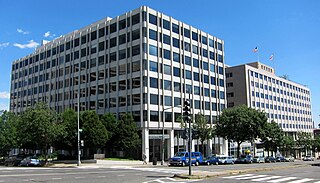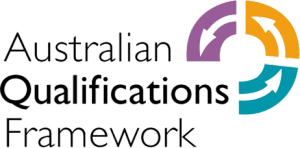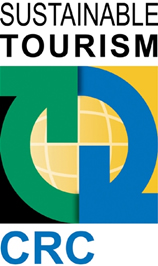Related Research Articles
The Early Childhood Education Act is the name of various landmark laws passed by the United States Congress outlining federal programs and funding for childhood education from pre-school through kindergarten. The first such act was introduced in the United States House of Representatives by Congresswoman Patsy Mink of Hawaiʻi in the 1960s. The theory behind the act is that the years before a child reaches kindergarten are the most critical to influence learning. Many children do not have access to early education before entering kindergarten. The goal of the act is to provide a comprehensive set of services for children from birth until they enter kindergarten.

The National Tertiary Education Union (NTEU) is an Australian trade union for all higher education and university employees. It is an industry union, and the only union working exclusively in the Australian university sector.

A charitable organization or charity is an organization whose primary objectives are philanthropy and social well-being.

The Ontario Student Assistance Program (OSAP) (French: Régime d'aide financière aux étudiantes et étudiants de l'Ontario ) is a provincial financial aid program that offers grants and loans to help Ontario students pay for their post-secondary education. OSAP determines the amount of money that a student is eligible to receive by considering factors such as tuition, course load, and the financial resources of the student. More than 380,000 students – more than half of all full-time students –received student financial aid in 2014-15.

The Australian Qualifications Framework (AQF) specifies the standards for educational qualifications in Australia. It is administered nationally by the Australian Government's Department of Industry, with oversight from the States and Territories, through the Standing Council of Tertiary Education Skills and Employment. While the AQF specifies the standards, education and training organisations are authorised by accrediting authorities to issue a qualification.

A grant is a fund given by a person or organization, often a public body, charitable foundation, a specialised grant-making institution, or in some cases a business with a corporate social responsibility mission, to an individual or another entity, usually, a non-profit organisation, sometimes a business or a local government body, for a specific purpose linked to public benefit. Unlike loans, grants are not intended to be paid back. Examples include student grants, research grants, the Sovereign Grant paid by the UK Treasury to the monarch, and some European Regional Development Fund payments in the European Union.
The Dawkins Revolution was a series of Australian higher education reforms instituted by the then Labor Education Minister (1987–91) John Dawkins. The reforms merged higher education providers, granted university status to a variety of institutions, instituted a system for income contingent loans to finance student fees, required a range of new performance monitoring techniques and methods, and revamped the relationship between universities and the Commonwealth Government. The reforms transitioned Australia's higher education system into a mass system which could produce more university educated workers, but have remained controversial due to their impacts on the incentives facing universities, bureaucracies and academics.
The Australian Research Council (ARC) is the primary non-medical research funding agency of the Australian Government, distributing more than A$800 million in grants each year. The Council was established by the Australian Research Council Act 2001, and provides competitive research funding to academics and researchers at Australian universities. Most health and medical research in Australia is funded by the more specialised National Health and Medical Research Council (NHMRC), which operates under a separate budget.
Superannuation in Australia or "super" is a savings system for workplace pensions in retirement. It involves money earned by an employee being placed into an investment fund to be made legally available to fund members upon retirement. Employers make compulsory payments to these funds at a proportion of their employee's wages. From July 2023, the mandatory minimum "guarantee" contribution is 11%, rising to 12% from 2025. The superannuation guarantee was introduced by the Hawke government to promote self-funded retirement savings, reducing reliance on a publicly funded pension system. Legislation to support the introduction of the superannuation guarantee was passed by the Keating Government in 1992.
The National Health and Medical Research Council (NHMRC) is the main statutory authority of the Australian Government responsible for medical research. It was the eighth largest research funding body in the world in 2016, and NHMRC-funded research is globally recognised for its high quality. Around 45% of all Australian medical research from 2008–12 was funded by the federal government, through the NHMRC.

KiwiSaver is a New Zealand savings scheme which has been operating since 2 July 2007. Participants can normally access their KiwiSaver funds only after the age of 65, but can withdraw them earlier in certain limited circumstances, for example if undergoing significant financial hardship or to use a deposit for a first home.
Research Quality Framework (RQF) was a component of Backing Australia's Ability, an initiative of the Australian Government to formulate a best practice framework for assessing research quality and the impact of research, and ensure that public funding was being invested in research which would deliver real benefits to the wider community. RQF was to bring public funding of research in line with government policy for funding to be determined by outcomes achieved.

Tertiary education in Australia is formal education beyond high school in Australia, consisting of both government and private institutions and divided into two sectors; Higher Education and Vocational Education and Training (VET) provided by government-owned TAFEs & private Registered Training Organisations (RTO). Australian Qualifications Framework (AQF), the Australian national education policy, classifies tertiary qualification into 10 levels: level 1 to 4 vocational certificates ; level 5 & 6 undergraduate diploma and advanced diploma; level 6 associate degree; level 7 bachelor degree, level 8 bachelor honours degree & graduate certificates and graduate diplomas; level 9 for master's degree; and level 10 PhD. Most universities are government owned and mostly self-regulated. For other institutes there are two national regulators for tertiary education for registration, recognition and quality assurance of both the "provider institutes" as well as the "individual courses" provided by the providers. Tertiary Education Quality and Standards Agency (TEQSA) regulates institutes which provide education from level 5 or above. Australian Skills Quality Authority (ASQA) regulates institutes which provide education from level 1 to level 6.

Sustainable Tourism Cooperative Research Centre (STCRC),was an Australian Cooperative Research Centre, headquartered in Gold Coast, Queensland, established by the Australian Government's Cooperative Research Centers Program to establish a competitive and dynamic sustainable tourism industry in Australia. It ceased to operate on 30 June 2010.
In the New Zealand education system, decile was a key measure of socioeconomic status used to target funding and support schools. In academic contexts the full term "socioeconomic decile" or "socioeconomic decile band" was used.
The Higher Education Research Data Collection (HERDC) is the annual collection of research income data from Australian universities. It is currently collected by the Department of Education, Skills and Employment. HERDC data is used in the calculation of research block grants.
Section 96 of the Constitution of Australia authorises the Australian (Commonwealth) Parliament to grant financial assistance to any state on the terms and conditions that it sees fit, subject to acceptance by the state(s) concerned. The expanded use of the power under section 96 has added to Australia's vertical fiscal imbalance and enabled the Commonwealth to have a significant influence over matters that would otherwise be constitutionally State responsibilities.

Tertiary education in New Zealand is provided by universities, institutes of technology and polytechnics, private training establishments, industry training organisations, and wānanga. It ranges from informal non-assessed community courses in schools through to undergraduate degrees and research-based postgraduate degrees. All post-compulsory education is regulated within the New Zealand Qualifications Framework, a unified system of national qualifications for schools, vocational education and training, and 'higher' education. The New Zealand Qualifications Authority (NZQA) is responsible for quality assuring all courses and tertiary education organisations other than universities. Under the Education Act 1989, The Committee on University Academic Programmes (CUAP) and the Academic Quality Agency (AQA) have delegated authority for quality assurance of university education. The Tertiary Education Commission (TEC) is responsible for administering the funding of tertiary education, primarily through negotiated investment plans with each funded organisation.
Self-Financing Higher Education in Hong Kong refers to educational programmes at the sub-degree level and above provided by local self-financing entities. Since the government announced the target of enabling 60% of secondary school graduates to receive higher education, the self-financing post-secondary education sector has experienced significant expansion with the aim of accommodating the emerging needs of the society.
References
- ↑ Self-Assessed Australian Competitive Grant Income. Australian Department of Education and Training. Retrieved 14 April 2019.